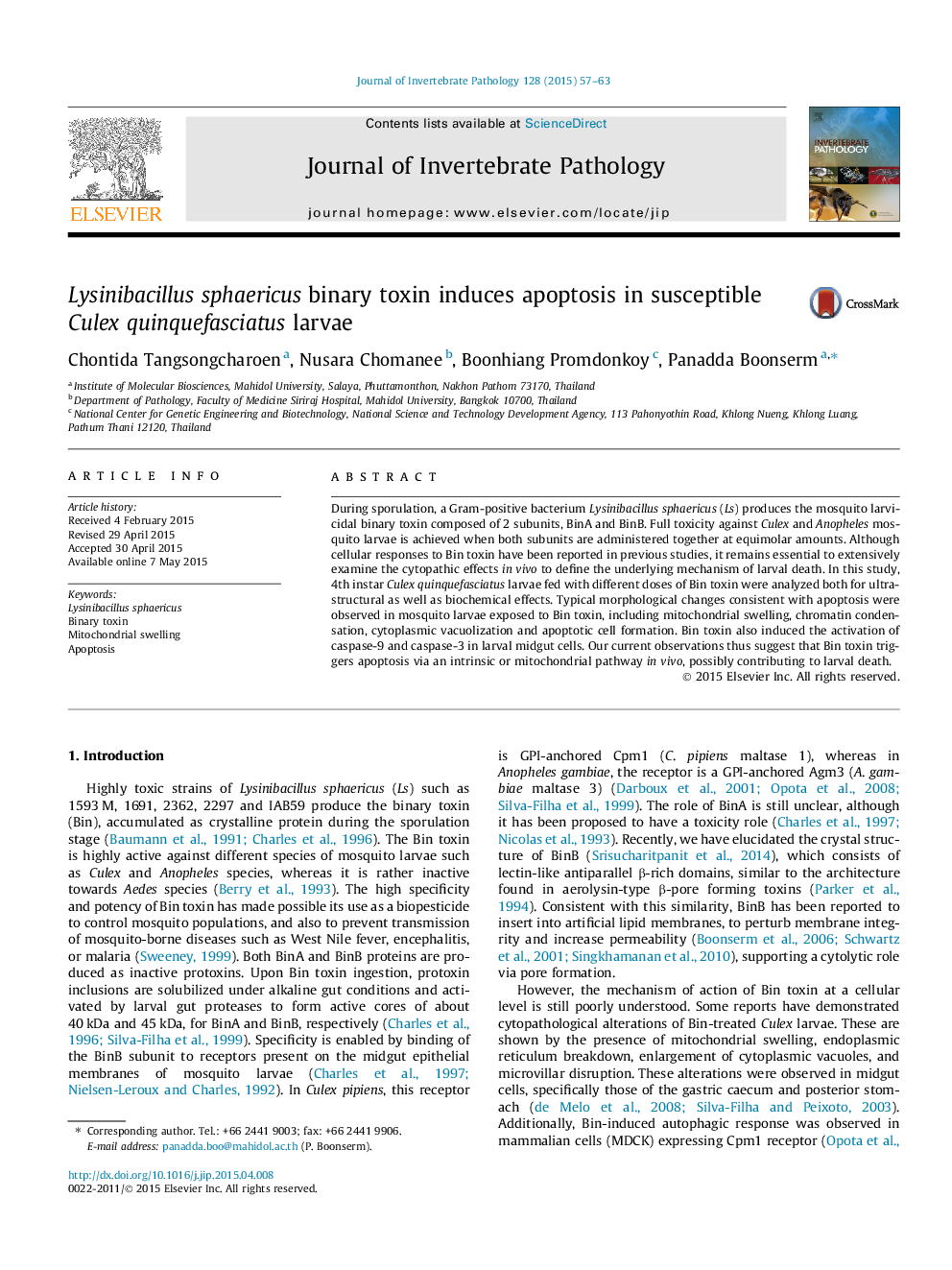| Article ID | Journal | Published Year | Pages | File Type |
|---|---|---|---|---|
| 6389423 | Journal of Invertebrate Pathology | 2015 | 7 Pages |
â¢Mitochondria is mainly targeted for Bin intoxication.â¢Mechanism underlying larval death of Bin toxin involves in apoptosis.â¢Bin toxin induced the activation of caspase-9 and caspase-3.
During sporulation, a Gram-positive bacterium Lysinibacillus sphaericus (Ls) produces the mosquito larvicidal binary toxin composed of 2 subunits, BinA and BinB. Full toxicity against Culex and Anopheles mosquito larvae is achieved when both subunits are administered together at equimolar amounts. Although cellular responses to Bin toxin have been reported in previous studies, it remains essential to extensively examine the cytopathic effects in vivo to define the underlying mechanism of larval death. In this study, 4th instar Culex quinquefasciatus larvae fed with different doses of Bin toxin were analyzed both for ultrastructural as well as biochemical effects. Typical morphological changes consistent with apoptosis were observed in mosquito larvae exposed to Bin toxin, including mitochondrial swelling, chromatin condensation, cytoplasmic vacuolization and apoptotic cell formation. Bin toxin also induced the activation of caspase-9 and caspase-3 in larval midgut cells. Our current observations thus suggest that Bin toxin triggers apoptosis via an intrinsic or mitochondrial pathway in vivo, possibly contributing to larval death.
Graphical abstractDownload full-size image
